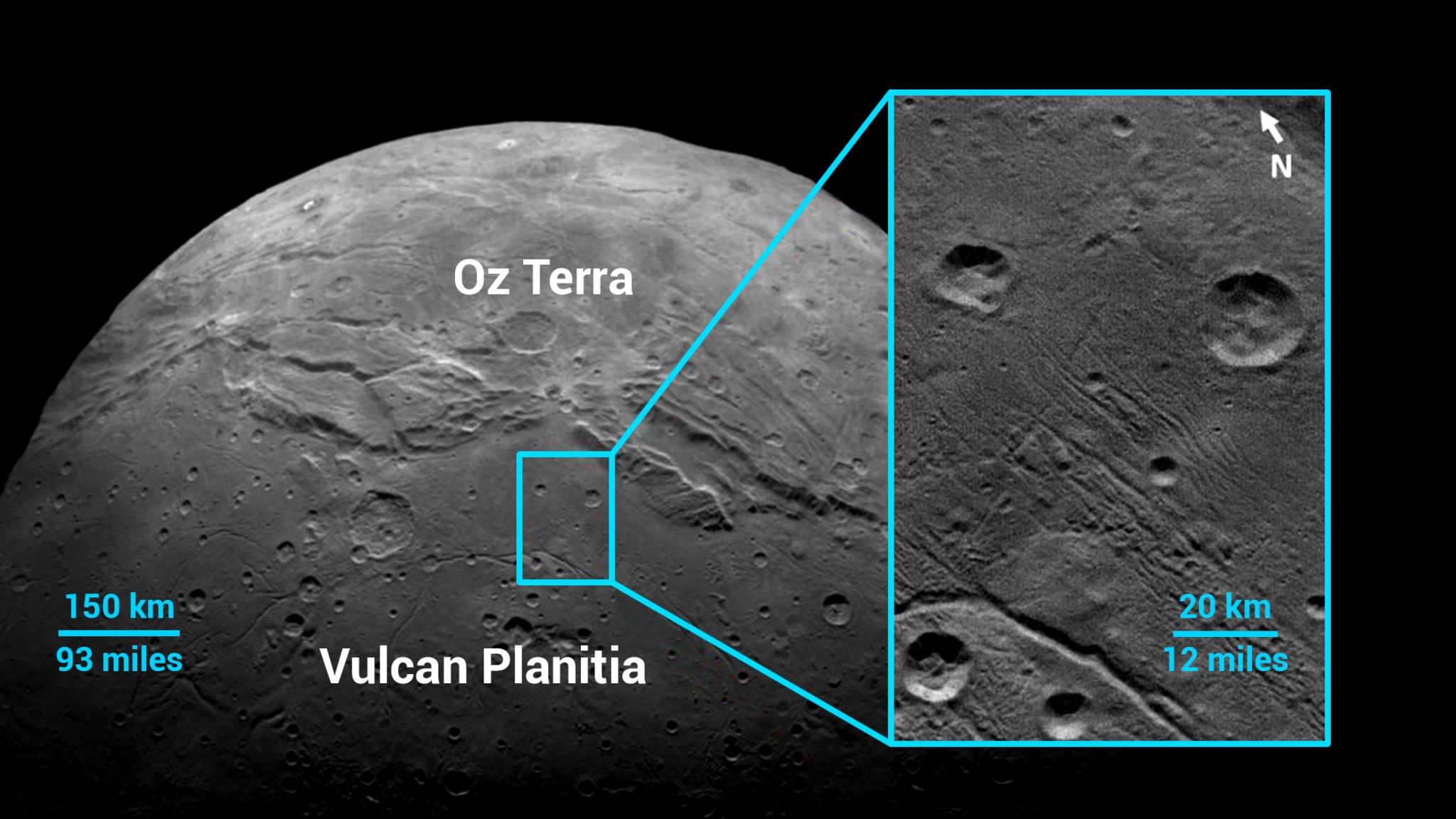News from Edgeworth–Kuiper Belt
Photos captured in 2015 by NASA's New Horizons spacecraft helped researchers reveal some new facts about the formation of the Kuiper Belt objects. Studying the surface of Pluto’s largest moon, they noticed that the number of small craters is relatively low.
Most of the craters on dwarf planets and its satellites were formed by collisions with small bodies from the Kuiper belt. Because Pluto and Charon are old residents of the Kuiper belt, the size of the crater reflects the size of impacting objects (KBOs). Astronomers explored in detail an ancient Charon plain known as Vulcan Planitia. This area was chosen because of its icy surface, which allows counting craters easily. Thus, was discovered that there is no smaller crater than 8 miles wide.
Such distinct dearth of small craters points to the lack of impactors that are smaller than about 1 mile across. These results led the research team to assume that the small craters were never there, to begin with. Until that, astronomers used to compare Kuiper Belt with the asteroid belt between Mars and Jupiter. The new observations let them know that the Kuiper belt is less active. It crashes into itself less often preventing the cascade of smaller bodies that the asteroid belt produces.
